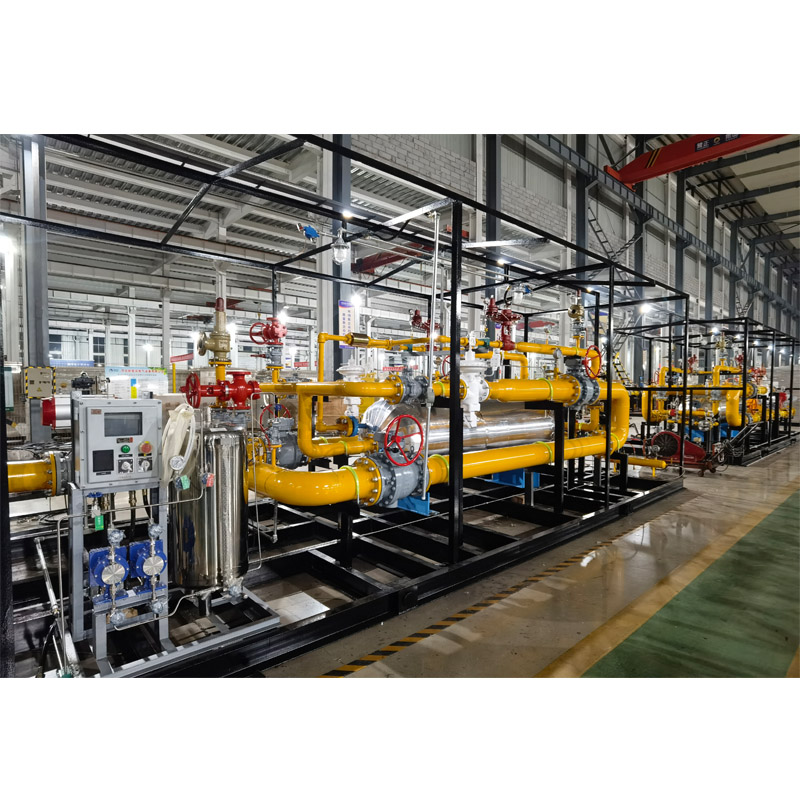
Nov . 24, 2024 14:26
Back to list
Safety Pressure Relief Valve for Enhanced System Protection and Performance
Safety Relief Valve Ensuring System Safety and Efficiency
Safety is paramount in various industries, especially those dealing with pressurized systems. One of the critical components that ensure safety in such applications is the Safety Relief Valve (SRV). This article delves into the importance, function, and working principles of safety relief valves, elucidating their role in preventing catastrophic failures and ensuring system efficiency.
Understanding Safety Relief Valves
A Safety Relief Valve is a crucial device designed to protect pressurized equipment and systems from overpressure conditions. When pressure within a system exceeds a preset limit, the valve opens to release excess pressure, thereby preventing potential hazards such as explosions, equipment failures, or catastrophic leaks. Safety relief valves are commonly used in various industries including oil and gas, chemical manufacturing, and power generation.
Importance of Safety Relief Valves
1. Protection Against Overpressure The primary function of safety relief valves is to protect equipment from overpressure. In pressurized systems, factors such as temperature fluctuations and sudden equipment failures can lead to increased pressure. Without the intervention of an SRV, this overpressure could lead to severe damage or even catastrophic incidents.
2. Compliance with Regulations Many industries are subject to strict safety regulations enforced by government bodies and industry standards. Safety relief valves are often mandated to ensure compliance with these regulations, safeguarding both personnel and the environment.
3. Cost-Effectiveness While the initial investment in safety relief valves may seem significant, they can save companies a substantial amount of money in the long run. By preventing accidents and equipment failures, SRVs help avoid costly repairs, legal liabilities, and potential shutdowns.
4. Enhancing Operational Efficiency By maintaining the appropriate pressure levels within a system, safety relief valves contribute to optimal operational efficiency. They ensure that machinery and equipment work within their designed parameters, thereby prolonging their lifespan and improving performance.
.
Safety relief valves operate based on pressure differentials. They consist of several key components, including a valve body, a spring mechanism, and a sealing element. Here’s a breakdown of how they function
صمام تنفيس الأمان

1. Normal Operating Conditions Under standard operating conditions, the pressure within the system is below the set pressure of the valve. In this state, the valve remains closed, preventing any fluid from escaping.
2. Pressure Increase As temperature or pressure begins to rise within the system, the pressure will eventually reach the set point of the valve.
3. Valve Activation Once the internal pressure exceeds the valve's set point, the spring mechanism is displaced, and the valve opens. This allows the excess pressure to escape, regulating the pressure within the system.
4. Sealing and Resetting Once the pressure drops back below the set point, the spring mechanism resets the valve, closing it and sealing the system once again. This automatic cycle continues as pressure fluctuates within the system.
Types of Safety Relief Valves
Safety relief valves come in various types, each designed for specific applications
1. Conventional Safety Relief Valves Commonly used in gas and vapor applications, these valves open at a predetermined set pressure.
2. Pilot-Operated Safety Relief Valves These valves use a pilot valve to control the main valve. They are more suitable for high-capacity applications and provide better reseal performance.
3. Balanced Safety Relief Valves This type is designed to minimize the effect of back pressure on the valve's performance, making them ideal for situations where the outlet pressure may vary.
Conclusion
In an era where safety is paramount, safety relief valves stand out as essential devices that facilitate safe operations in pressurized systems. Their ability to prevent overpressure conditions helps protect not only equipment but also the lives of personnel and the environment. With various types available to cater to different applications, investing in high-quality safety relief valves is crucial for any industry that operates under pressure. By ensuring compliance with regulatory standards and enhancing operational efficiency, safety relief valves play a vital role in modern industrial operations, making them an indispensable component of safety systems worldwide.
Next:
Latest news
-
Safety Valve Spring-Loaded Design Overpressure ProtectionNewsJul.25,2025
-
Precision Voltage Regulator AC5 Accuracy Grade PerformanceNewsJul.25,2025
-
Natural Gas Pressure Regulating Skid Industrial Pipeline ApplicationsNewsJul.25,2025
-
Natural Gas Filter Stainless Steel Mesh Element DesignNewsJul.25,2025
-
Gas Pressure Regulator Valve Direct-Acting Spring-Loaded DesignNewsJul.25,2025
-
Decompression Equipment Multi-Stage Heat Exchange System DesignNewsJul.25,2025

